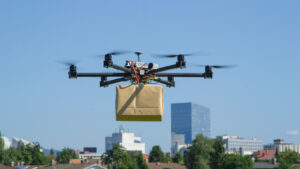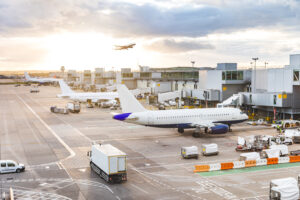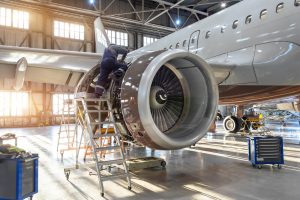Key Milestones Ahead
With over $8 billion raised by major AAM Original Equipment Manufacturers (OEMs) and 12,000 orders placed by customers spanning the globe, the AAM industry continues to advance and shape the future of aviation.
Despite nil industry revenue recognized to date, significant progress towards commercialization has been made:
- OEMs have designed vehicles for multiple use cases and several manufacturers are in advanced testing stages
- Regulators in key markets such as the US’s Federal Aviation Administration (FAA) and the European Union’s European Aviation Safety Agency (EASA) are rapidly developing vehicle certification regulations and airspace integration blueprints
- Operators have placed sizeable orders for vehicles to be deployed across both passenger and cargo applications
- Given the milestones that the AAM sector has achieved thus far, the industry has edged from hype and speculation into the “twilight zone” – the intermediate phase prior to entry-into-service (EIS) and the start of commercialization.
Several leading AAM OEMs have committed to an Entry-Into-Service (EIS) date in 2025, despite much still to be done to support this timeline. For many stakeholders, the rubber must start meeting the road with significant milestones to be achieved.
Alton Aviation Consultancy’s practice leads share their views on the progress required for the AAM industry to make 2025 a reality.
OEM Ramp-Up and Consolidation
Joshua Ng, Adam Guthorn
- OEMs are expecting to hit major vehicle certification milestones over the next couple of years
- To scale manufacturing, OEMs will need to enhance existing sites and develop advanced facilities to manufacture production-compliant vehicles to meet EIS
- In today’s crowded field of OEMs, market consolidation is expected with some firms exiting the market outright or joining with stronger players to benefit from more advanced technologies and / or stronger financial backing
Further OEM Funding Required, and Emergence of AAM Finance
John Mowry, Bradley Dailey, Ronan Murphy
- In order to continue vehicle R&D and to support the manufacturing ramp-up, OEM funding requirements will remain high; as such, manufacturers will need to raise further capital both prior to and through EIS
- Aside from the investor financing that has prevailed to date, presently signed MOUs with operators are expected to be converted into confirmed orders, with facilities such as pre-delivery payments (PDP) providing a vital source of cash to the OEMs
- Vehicles are expected to be owned by operators initially, with lessors likely to enter the space once asset liquidity, proven useful lives and known residual value profiles become known – thus providing an alternative route for operator access to vehicle assets
- Additional financial service providers, such as insurers, will also be drawn into the industry as they become familiar with the sector dynamics
Cargo and Airline Partners Lead the Way
Adam Cowburn, Joshua Ng
- The first AAM operators are expected to be those focused on short-haul cargo use cases, whereas early passenger use cases are likely to be intra-city airport to-city shuttle missions
- Cargo operators and airline regional partners (both incumbent and new entrants) will likely emerge as those amongst the first group to operate vehicles.
- New charter players are expected to emerge as specialized AAM operators
- Despite significant order volumes from airlines (34% of total), they are not expected to operate services and will instead rely on partners to provide capacity
Airspace Integration and Ground Infrastructure Development
Raffi Kasparian, Mabel Kwan
- Whilst regulators are defining blueprints for airspace integration, the full concept of operations (ConOps) between ground, air, and vehicle needs to be developed and rigorously tested before EIS
- Infrastructure enhancements to support city-to-airport and city-to-city operations are required (e.g., conversion of heliports or creation of greenfield vertiports) – AAM considerations within airport master planning is also expected to gain increasing focus in the coming years
- Furthermore, the intricacies of AAM supporting requirements such as energy infrastructure for eVTOL charging must also be considered at facilities to support full EIS
- Regulators and infrastructure operators must also look to establish the commercial use case for AAMs to recoup the initial infrastructure investment. This will include developing new tariff frameworks given the differences from business models seen in today’s aviation sector
Dedicated AAM MRO Services Take Shape
Joshua Ng, Adam Guthorn
- Whilst OEMs are expected to provide aftermarket services to operators initially, there are opportunities for dedicated maintenance providers to enter the AAM space
- Over the next few years, OEMs are expected to enter partnerships with established aviation aftermarket service providers to provide proven aftersales support, eHang’s recent tie-up with HAECO is one such example
- Participating MROs will need to make steps to develop AAM maintenance expertise, and develop a supply chain model including skilled mechanics and parts management suitable for the distributed operations across the urban city landscape
Enabling Public Support
Joshua Ng, Adam Cowburn
- OEMs, operators and infrastructure providers will play an important role in continued engagement with the public to educate on the benefits that AAM services can bring to communities, as well as the safety of their operations. Such support will continue to exert pressure on policymakers to greenlight industry development plans
- AAM stakeholders will have to alleviate public noise concerns in urban environments, overcome safety fears and conquer “not-in-my-backyard” (NIMBY) attitudes held in many communities



















